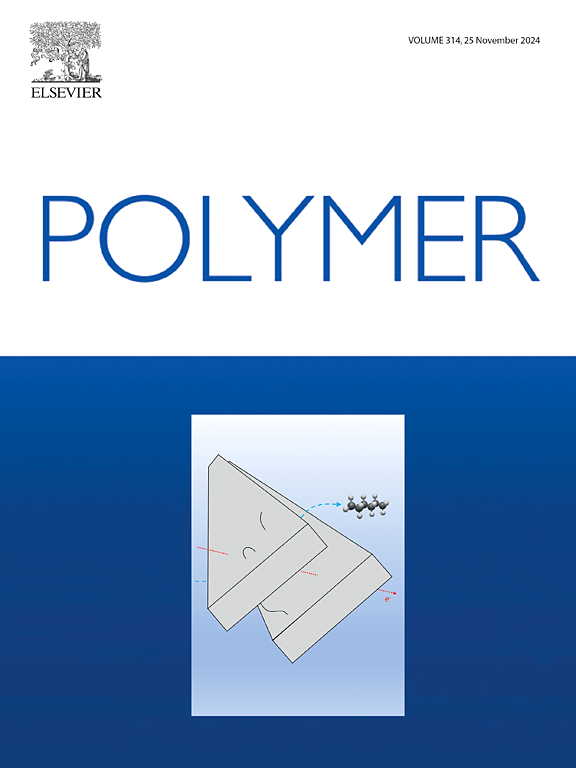Skin-whitening effect of hydroxypropyl-β-cyclodextrin/glabridin inclusion complex loaded on a dual thermo/pH-sensitive hydrogel
IF 4.1
2区 化学
Q2 POLYMER SCIENCE
引用次数: 0
Abstract
As a natural isoflavone compound, glabridin (GLD) has excellent skin-whitening properties, but its biomedical applications are greatly limited due to its poor water solubility and low skin permeability. In the current work, GLD was complexed with hydroxypropyl-β-cyclodextrin (HP-β-CD) to form a GLD/HP-β-CD inclusion complex that would improve the water solubility and skin permeability by changing the physicochemical properties of GLD, including the formation of intermolecular hydrogen bonds and amorphous transformation. The cytotoxicity of GLD/HP-β-CD on HaCaT keratinocytes is lower than that of GLD, while it has a more substantial inhibitory effect on melanin than GLD. Furthermore, a dual thermo- and pH-responsive hydrogel called PCG was established as the carrier of GLD/HP-β-CD. The PCG hydrogel presented a porous structure, biodegradability, and excellent biocompatibility. GLD had a dual thermo- and pH-responsive release behavior from the PCG hydrogel and displayed an accelerated release rate at weakly acidic pH conditions compared to the neutral pH environment. Moreover, GLD/HP-β-CD/PCG hydrogel can significantly inhibit melanin deposition in vivo. Taken together, this study provides a low toxicity and high efficiency new method for the application of GLD in biomedical fields, demonstrating its enormous potential in skin-whitening.
负载在双重热敏/pH 敏感水凝胶上的羟丙基-β-环糊精/格拉布丁包合物的美白效果
作为一种天然异黄酮化合物,格拉布林(GLD)具有极佳的美白功效,但由于其水溶性差、皮肤渗透性低,其生物医学应用受到很大限制。在目前的研究中,GLD 与羟丙基-β-环糊精(HP-β-CD)络合形成 GLD/HP-β-CD 包合物,通过改变 GLD 的理化性质,包括分子间氢键的形成和无定形转变,提高其水溶性和皮肤渗透性。GLD/HP-β-CD 对 HaCaT 角质细胞的细胞毒性低于 GLD,而对黑色素的抑制作用比 GLD 更强。此外,还建立了一种名为 PCG 的双重热响应和 pH 响应水凝胶,作为 GLD/HP-β-CD 的载体。PCG 水凝胶具有多孔结构、生物可降解性和良好的生物相容性。GLD 在 PCG 水凝胶中具有热响应和 pH 响应的双重释放行为,与中性 pH 环境相比,GLD 在弱酸性 pH 条件下的释放速度更快。此外,GLD/HP-β-CD/PCG 水凝胶还能显著抑制体内黑色素沉积。综上所述,本研究为 GLD 在生物医学领域的应用提供了一种低毒、高效的新方法,显示了其在皮肤美白方面的巨大潜力。
本文章由计算机程序翻译,如有差异,请以英文原文为准。
求助全文
约1分钟内获得全文
求助全文
来源期刊

Polymer
化学-高分子科学
CiteScore
7.90
自引率
8.70%
发文量
959
审稿时长
32 days
期刊介绍:
Polymer is an interdisciplinary journal dedicated to publishing innovative and significant advances in Polymer Physics, Chemistry and Technology. We welcome submissions on polymer hybrids, nanocomposites, characterisation and self-assembly. Polymer also publishes work on the technological application of polymers in energy and optoelectronics.
The main scope is covered but not limited to the following core areas:
Polymer Materials
Nanocomposites and hybrid nanomaterials
Polymer blends, films, fibres, networks and porous materials
Physical Characterization
Characterisation, modelling and simulation* of molecular and materials properties in bulk, solution, and thin films
Polymer Engineering
Advanced multiscale processing methods
Polymer Synthesis, Modification and Self-assembly
Including designer polymer architectures, mechanisms and kinetics, and supramolecular polymerization
Technological Applications
Polymers for energy generation and storage
Polymer membranes for separation technology
Polymers for opto- and microelectronics.
 求助内容:
求助内容: 应助结果提醒方式:
应助结果提醒方式:


